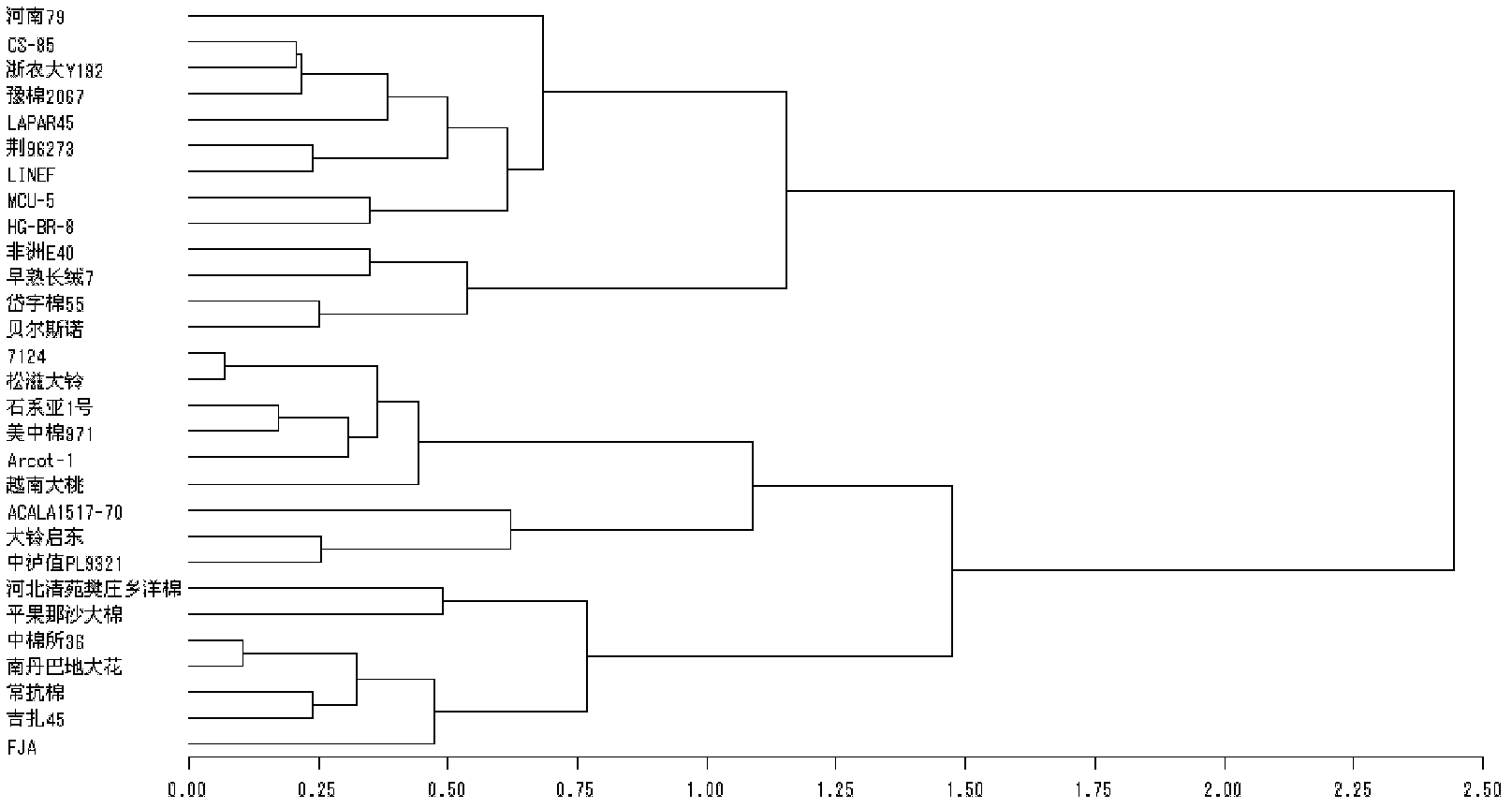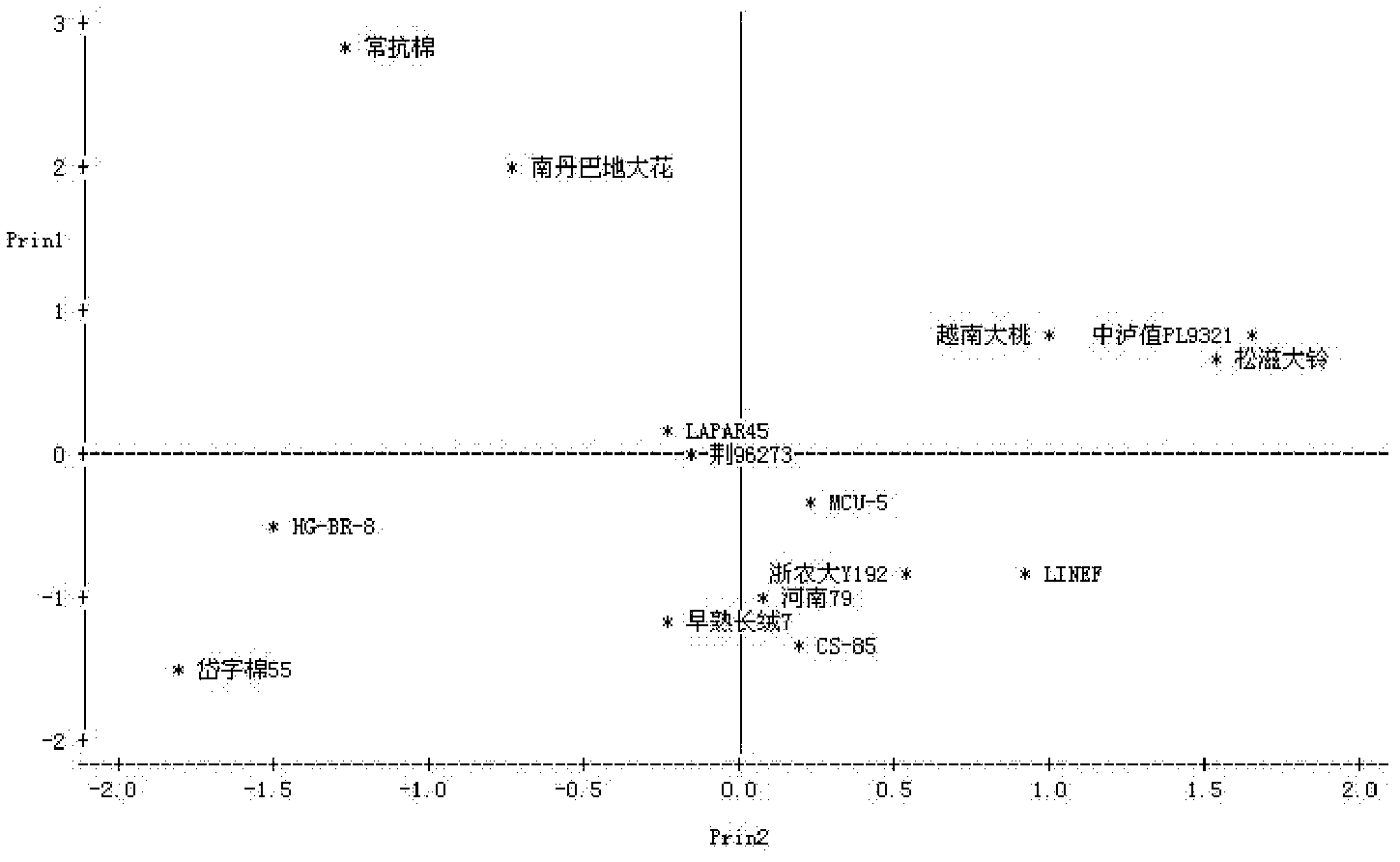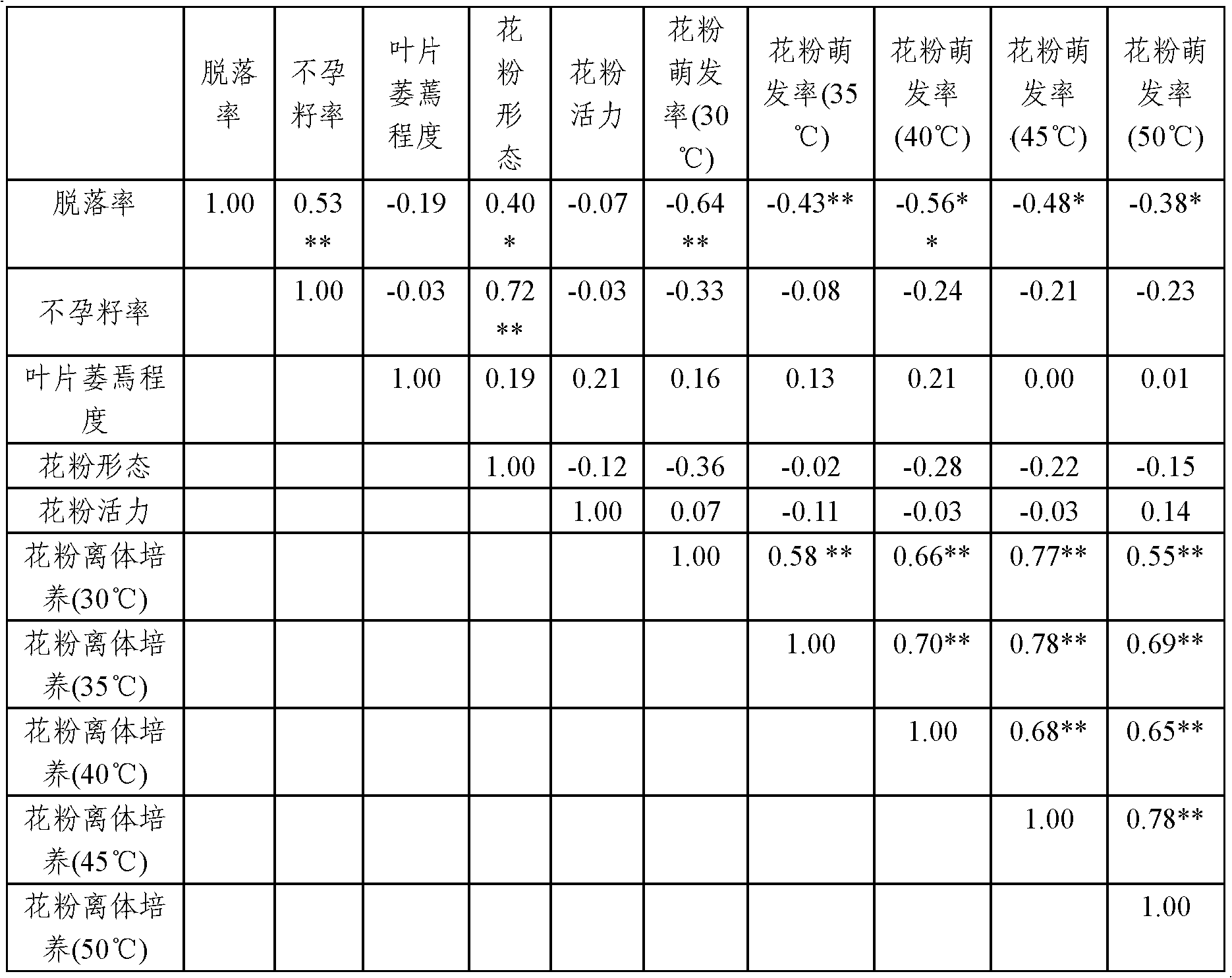Method for rapid identification of heat-resistance seedling state of cotton
An identification method, heat resistance technology, applied in the direction of botanical equipment and methods, horticulture, application, etc., can solve problems such as long time span
- Summary
- Abstract
- Description
- Claims
- Application Information
AI Technical Summary
Problems solved by technology
Method used
Image
Examples
Embodiment 1
[0021] Example 1 Screening of heat-resistant materials
[0022] The correlation between shedding rate and pollen germination rate in different plants has been shown to be useful as an indicator of heat tolerance in cotton (Prasad et al. 1999; Aloni et al. 2001; Reddy et al. 1999).
[0023] In 2007, 200 copies of different cotton germplasm resources or varieties were planted in Turpan, Xinjiang (the growth period is usually above 35°C, and sometimes even as high as above 40°C). The degree of wilting, sterile seed rate, pollen morphology, pollen vigor and other traits were used to identify the heat-resistant characteristics of different cottons.
[0024] In order to exclude the impact of continuous high temperature in the field on the in vitro culture of pollen, find out the best field identification heat resistance index. First analyze the height of the shedding rate of 29 sensitive and heat-resistant materials (shedding rate > 60% is sensitive to high temperature, shedding ra...
Embodiment 2
[0031] The screening of embodiment 2 cotton growth period and adversity condition
[0032] Cotton seedlings in six different stages of the cotton seedling stage, namely: cotyledon stage, one-leaf stage, two-leaf stage, three-leaf stage, four-leaf stage and five-leaf stage, were subjected to control (30°C), 35°C, 40°C, After treating the heat-resistant materials Changkang cotton and Nandanbadi Dahua selected in Example 1 at 45°C and 48°C, and the high-temperature sensitive materials Daizimian 55 and Zaoshu Changrong No. 7 for 8 hours, the ascorbic acid peroxidation was measured. The evaluation indexes of biomolecules (APX) and relative conductivity are shown in Table 2.
[0033] Nandanbadi Dahua and Changkang cotton showed strong heat resistance in each period, and the heat resistance of Nandanbadi Dahua was stronger than Changkang cotton. At the cotyledon stage, the heat resistance of each material has little difference and cannot be used as an identification index. At the f...
Embodiment 3
[0055] Plant 15 different heat-resistant materials in nutrient pots (0.03m2 in size) under normal conditions, with 5 plants in each pot, plant three times for each material, and grow to the three-leaf stage (three unfolded true leaves). The seedlings at the three-leaf stage were placed in a light-temperature incubator at 40° C. for 8 hours (relative humidity was 70%); at the same time, the control of corresponding materials was set: the seedlings were placed in a light-temperature incubator at 30° C. for 8 hours, and the relative humidity was 70%. Fresh leaves (all taken) were taken from the treatment and control materials at the same time for the determination of ascorbate peroxidase (APX) activity content, relative conductivity and seedling wilting rate, using its relative value P [P=(X-Y) / Y; under X stress The measured value of Y is the control measured value under normal conditions] as an evaluation index.
[0056]It can be seen from Table 3 that there are significant or e...
PUM
 Login to View More
Login to View More Abstract
Description
Claims
Application Information
 Login to View More
Login to View More - R&D
- Intellectual Property
- Life Sciences
- Materials
- Tech Scout
- Unparalleled Data Quality
- Higher Quality Content
- 60% Fewer Hallucinations
Browse by: Latest US Patents, China's latest patents, Technical Efficacy Thesaurus, Application Domain, Technology Topic, Popular Technical Reports.
© 2025 PatSnap. All rights reserved.Legal|Privacy policy|Modern Slavery Act Transparency Statement|Sitemap|About US| Contact US: help@patsnap.com



